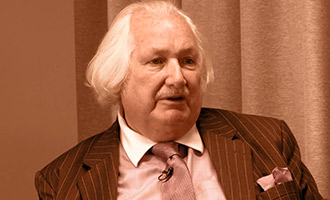Why you need to appeal to both sides of the brain in thought leadership
Rob Mitchell
Psychologists have long told us that there is a fundamental difference between the left-side and right-side of the brain. The left is supposed to deal with the analytical, logical aspects of our personality, while the right handles our more emotional and creative side.
Consumer marketing has traditionally been skewed towards the right side of the brain. Nebulous, intangible factors, such as brand and customer awareness, were what mattered, and the profession typically attracted people who were right-brain dominant: creative, imaginative types who were good at telling stories and visual representations.
More recently, we have seen a greater emphasis on the left side of the brain in marketing. The rise of analytics, Big Data and other such technologies has made the profession much more analytical, numbers-based and logical than it ever used to be. As a result, successful marketing is now seen to depend on an approach that harnesses both sides of the brain: it is still creative and imaginative, but must be built on a foundation of a clear, analytical rationale rather than something nebulous and intangible.
The importance of striking a balance between left and right brain is particularly important in thought leadership. In practice, though, not many companies get this right. Compared with consumer marketing, there is often a disproportionate emphasis on a left-brain approach.
We have all seen thought leadership reports, often based on surveys, which are little more than a dry procession of statistics, numbers and analysis. This is classic left-brain territory – logical, serious and analytical, but lacking the human touch that is so important to successful marketing.
There are many problems with this left-brain emphasis in thought leadership. At a fundamental level, the B2B customer is an individual, not a company. They have emotions and respond to stories, a human touch and conversations, not just numbers and analysis. We should always remember that, ultimately, the thought process that B2B buyers go through when buying an expensive consulting contract or IT service is not that different from how they buy their groceries or choose their car. So the content marketing that helps them make that decision needs to share many of the same elements as consumer marketing.
In practice, this means that producers of thought leadership need to apply both left-brain and right-brain techniques. As well as numbers, analysis and research, good B2B content needs stories, case studies and anecdotes with which an audience can identify on an emotional level. B2B buyers are people, and they will engage with content that treats them as individuals.
The B2B marketing sector understood this long ago – but in our view, the B2B content and thought leadership world has been slow to catch up with this trend.
This doesn’t mean to say that surveys and other quantitative research techniques should be scaled back – indeed, we would argue that they are more important than ever. But when designing your thought leadership or content marketing strategy, make sure that you don’t fall into trap of thinking it is all about the left-brain. There’s nothing wrong with numbers, analysis and serious content, but it always needs to have a human face.
Speak to the team
We’ll help you to navigate and overcome any challenges you currently face and learn how to get more out of your content.
Book a meeting
About the author: Rob Mitchell
Rob is our CEO and co-founder and leads FT Longitude’s strategic planning and sets the overall vision and priorities for the business. He manages the board-level relationship with FT Longitude’s parent company, the Financial Times group, and also oversees FT Longitude’s finances, people management and administration.
Prior to co-founding FT Longitude in 2011, Rob was an independent writer and editor. Between 2007 and 2010, he was a managing editor at the Economist Intelligence Unit and prior to that he was an editor at the Financial Times, where he was responsible for the newspaper’s sponsored reports, including the Mastering Management series.
 |
Tel:
+44 (0)20 7873 4770
|
Tel:
+44 (0)20 7873 4770


